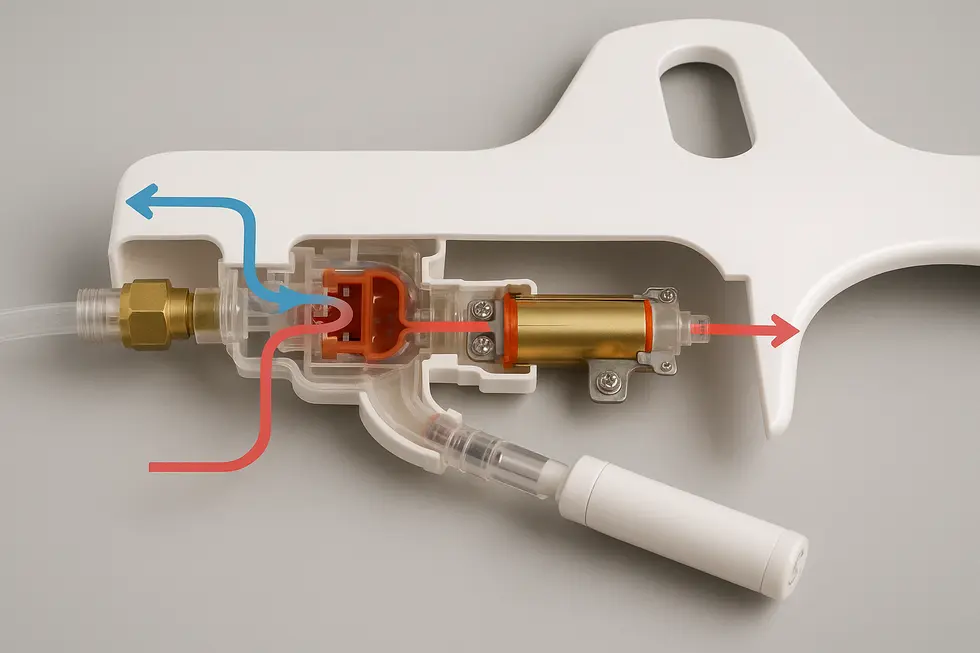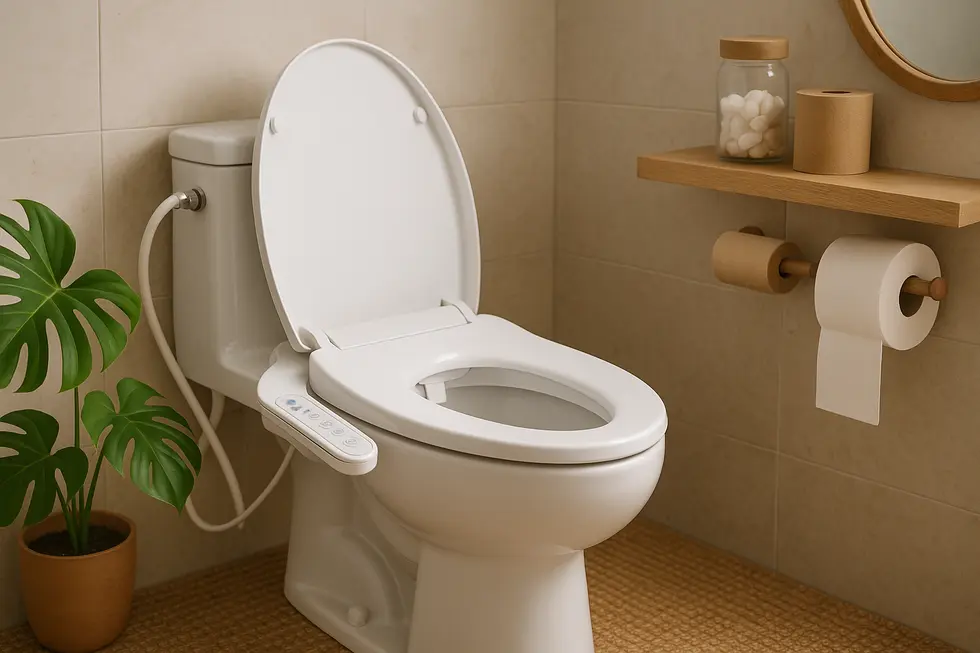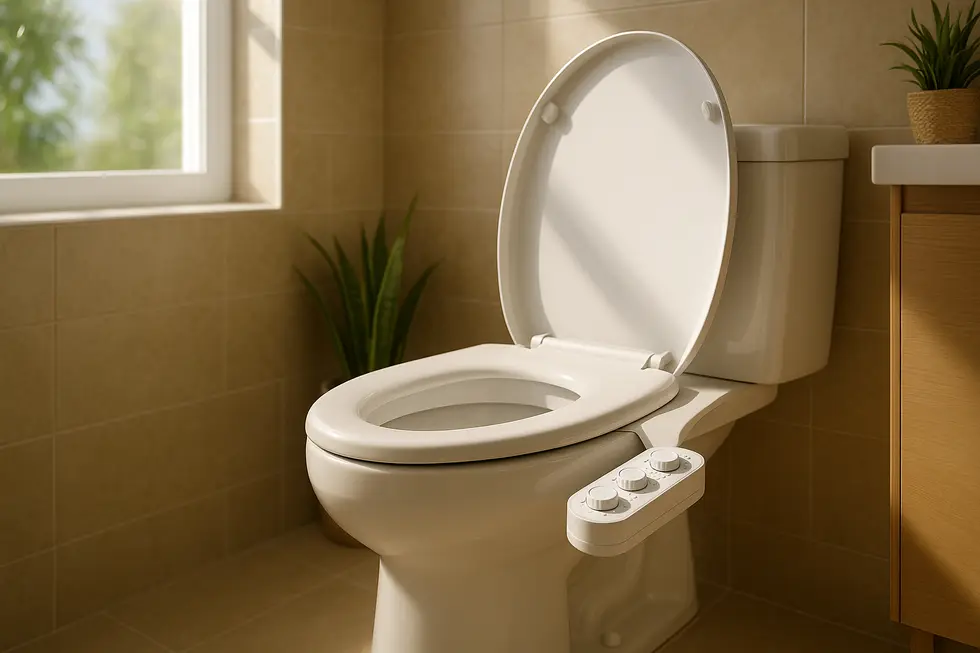Bidet Attachment
Exploring Warm Water Bidet Attachments: Comfort, Health, and Sustainability
Bidet attachment with warm water has revolutionized personal hygiene, offering a blend of technological innovation, economic benefits, and positive environmental impact. As families seek modern solutions that enhance health and comfort while supporting sustainable practices, understanding how these devices integrate with household plumbing systems is crucial. This article explores the technological architecture and heating mechanisms of bidet attachments, the evolving market dynamics driving consumer adoption, and the wider societal benefits they confer. Join us as we delve into how these devices fit seamlessly into contemporary living, making a significant difference in everyday routines and serving as a smart bathroom upgrade for any home. Whether for improved hygiene or eco-conscious living, choosing a bidet attachment with warm water is a simple yet effective bathroom upgrade.
From Cold Supply to Silky Spray: How Instant Heaters Power Modern Warm-Water Bidet Attachments

Lift the lid on a contemporary warm-water bidet attachment and the first thing you notice is what is missing—a bulky reservoir. Instead, a palm-sized electric heater sits between the cold supply hose and the spray nozzles, turning room-temperature water into a perfectly tempered stream in the fraction of a second the user presses “wash.” Cold water is channelled through a sintered-metal heat exchanger wrapped with a ceramic resistance coil. When an occupancy sensor confirms someone is seated, a microcontroller energises that coil, sampling twin thermistors ten times per second to keep outlet temperature within ±1.5 °C of the level you selected earlier on the side panel or remote.
Because the element only fires while water flows, energy draw during stand-by drops to a whisper—often under 2 W—yet the initial thermal punch reaches 900–1 350 W, eliminating the chilly first splash familiar to tank-style seats. Hybrid designs refine the concept further: a teacup-sized pre-heat chamber absorbs the first thirty seconds of demand, letting the main coil idle at roughly 75 W until needed. The result is unbroken warmth through long wash cycles without the constant energy penalty of keeping an entire litre on simmer.
Pressure and safety are policed just as tightly. A brass needle valve downstream of the heater smooths municipal pressures into user-friendly spray modes, while firmware cuts power instantly if water tops 42 °C or if sensor readings disagree by more than 6 °C—a quick way to prevent scalding. Behind the scenes, an ASSE-compliant backflow guard isolates the household line, maintaining plumbing code integrity.
Nozzle mechanics marry this thermal architecture with hygiene. Polished stainless tubes extend, pulse-clean themselves, then retract for 50 000 cycles, their apertures sized separately for posterior and feminine wash. Users fine-tune everything—temperature, pressure, even oscillation—through intuitive icons, or schedule eco-modes via Wi-Fi so the seat naps when the household is asleep. For shoppers weighing options, our in-depth guide to choosing the best bidet attachment explains which heater style suits different routines.
The growing sophistication of these instant heaters underpins the category’s leap from luxury to everyday appliance, a transition explored further in detailed technical notes here: https://pegabidet.com/2025/08/12/warm-water-bidet-attachment/.
From Luxury to Mainstream: The Economics Driving Warm-Water Bidet Attachments

Warm-water bidet attachments have marched from niche curiosity to economic force because they solve three contemporary pain points at once: rising hygiene expectations, environmental anxiety, and the desire for affordable smart-home upgrades. Analysts bundle the category inside the larger smart-toilet universe, yet retrofit attachments play a unique role. They leverage existing porcelain, requiring only a Y-connector or a nearby outlet, so households enjoy most of the wellness benefits of integrated smart toilets at a fraction of replacement cost.
Entry-level mechanical mixers often retail between US$40 and US$120, slotting comfortably into a weekend renovation budget. Mid-range electric seats with small reservoirs cluster around US$200–US$350, while tankless instant-heat models start near US$500 and climb with app control, voice integration, and occupancy-sensing lids. This laddered pricing lets manufacturers capture value from renters seeking a DIY upgrade and from homeowners equipping spa-style ensuites alike. Cost transparency also shortens the consideration phase: surveys show 41 % of U.S. consumers decide within one month of first learning the price-to-benefit ratio.
Pandemic-era stock-outs of toilet paper accelerated adoption, but sustained growth now rides on harder economics. A household using two rolls weekly spends roughly US$180 yearly; switching to a bidet attachment cuts paper consumption by up to 70 %, allowing payback for many models in under 18 months. Similar arithmetic appeals to hotels and multifamily developers tasked with both operating-expense control and green-building certifications.
Regional uptake still reflects culture. Penetration tops 70 % in Japan, but in North America it recently nudged past 10 %. Here, word-of-mouth matters: renters posting TikTok reviews and DIY influencers showing how adding a bidet to an existing toilet can be finished in ten minutes drive organic demand (guide). Government policy acts as quieter tailwind; water-conservation rebates in parts of California or Seoul shave 5–10 % off retail prices, nudging fence-sitters toward purchase.
Behind the storefront, global supply chains have matured. Stainless tubes from Niigata and precision ABS parts from Guangdong ship in standardized kits, keeping logistics lean even as microcontroller shortages recently pinched margins. Scale economies, however, are already offsetting component volatility: every 10 % rise in annual production volume trims finished cost about 4 % through tooling amortization.
With the broader smart-toilet sector projected to triple by 2032, warm-water attachments occupy the sweet spot where accessibility meets aspiration, ensuring their share of bathroom budgets will continue to swell (source: Market Research Intellect).
Beyond Clean: How Warm-Water Bidet Attachments Shrink Footprints, Soothe Skin, and Shift Cultural Norms

A single cleansing cycle from a warm-water bidet attachment uses roughly 0.6 L of water—less than two sips from a reusable bottle—yet it displaces the 34 L embodied in one roll of two-ply tissue. Scaled to a household of four, life-cycle studies indicate a 12–15 kg annual drop in paper consumption and an 18 kg CO₂-equivalent saving, even after accounting for the 50–90 kWh of electricity that tankless seats draw. Because modern forestry still relies on clear-cutting, this shaved demand directly preserves mixed-age stands that harbour critical biodiversity. Fewer rolls also mean less plastic wrap and fewer diesel truckloads rumbling along supply chains.
The environmental dividend pairs with measurable health gains. Warm water—held within a ±1.5 °C target by thermostatic logic—cleanses without the micro-abrasions dry paper causes. A 2021 clinical trial reported a 54 % reduction in symptomatic haemorrhoids among regular users, while postpartum participants logged 43 % lower perineal discomfort scores. Adjustable pressure valves (70–415 kPa) prevent mucosal stress, and firmware-locked anti-scald cut-offs cap temperature at 42 °C to protect delicate skin. These safeguards have persuaded many physicians to recommend bidets for patients managing irritable bowel flares, dermatitis, or limited mobility; a concise medical overview can be found in this doctor-endorsed guidance.
Socially, the devices answer a craving for autonomy and dignity. Installation is tool-light—usually no more than twisting a T-adapter—making them viable for renters, dorm residents, and multigenerational homes alike. Hotels and airports now retrofit units to reassure hygiene-conscious travellers who emerged from the pandemic wary of shared surfaces. As adoption normalises, cultural resistance in Western markets is ebbing: Statista notes 37 % of U.S. consumers considered adding a bidet after 2020 shortages, and sales have since risen 12 % year-over-year.
Economically, the calculus is straightforward. At current tissue prices, a mid-range attachment pays for itself within 12–18 months; energy costs add little, especially when eco-modes cut standby draw to 1–3 W. Some models even mist nozzles with electrolysed water, slashing the need for chemical cleaners and the VOCs they release indoors. Warm-water bidets therefore sit at the rare intersection where personal comfort, public health, and planetary stewardship all converge—an everyday upgrade with outsized ripple effects. (Source: https://www.samodrahome.com/blogs/news/elevating-personal-hygiene-the-role-of-bidet-attachments-in-busy-modern-lives)
Final thoughts
Embracing warm water bidet attachments as part of modern family dwellings signifies a commitment to advanced hygiene, enhanced comfort, and reducing environmental footprints. As these devices become more widespread, their ability to balance performance with eco-responsibility highlights their value in everyday life. Understanding the technological workings, market dynamics, and beneficial impacts they offer can empower families to make informed choices that lead to healthier and more sustainable lifestyles.
Experience a new standard of clean with PEGABidet—designed for comfort, safety, and independence. Join thousands who trust us to make personal care simple and dignified. Contact us contact@pegabidet.com
About us
PEGABidet is a brand owned by L.A NEXTGEN LLC, based in California. We design intuitive, hygienic, and accessible bathroom solutions that prioritize safety, dignity, and independence. Our mission is to make personal care effortless and empowering for people at every stage of life.

